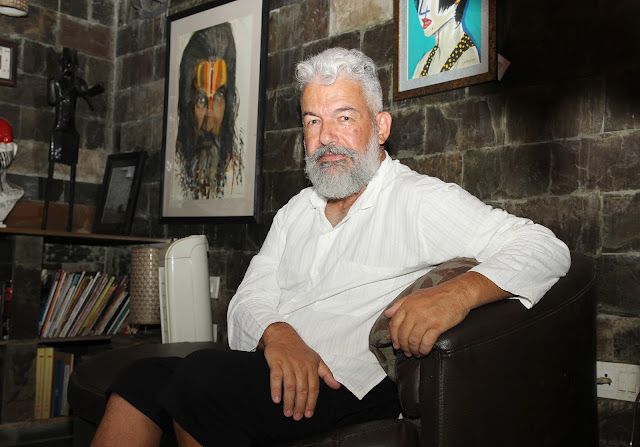Vassilis is Artistic Director at
Eilissos a company for culture.”Eilissos" micro-art space is the seat of
the homonymous non- profit organization founded in 2006 by group of artists,
scientists and entrepreneurs to overall research, study, preservation and
dissemination of art in various manifestations. An old house - in the city
center near the old bed of the homonymous river - converted into "pocket
theater", music scene, exhibition space according to the needs
of the event. Abhijit Ganguly spoke to him on the sidelines of
Celebrating 82nd birth anniversary of Jerzy Grotowski the event Celebrating 82nd
birth anniversary of Jerzy Grotowski in Kolkata organised by Bibhaban In
association with. Theatre House & Proscenium Art Centre.
What exactly is the philosophy of physical theatre?
What exactly is the philosophy of physical theatre?
For me the philosophy of physical theatre is the philosophy that I have seen in Grotowski’s attitude in his works. It is the philosophy to keep the essentials and throw everything else. This stands in the making of a performance as in life … a man should tend to evolve to someone who will be “perfect” if possible in the meaning I gave before as the actor also should tend to be the “total” actor if possible also …
Physical theatre contains under his umbrella many styles or forms. Starting from one image that can be converted to movement and special atmosphere … and finally to communication without hearing and understanding a text but mainly feeling the presence of the actor, the images he creates and the whole atmosphere …
This is related also in our days with dance theatre or dance as the Japanese discipline of Butoh dance or forms like the tradition of Katakhali in India … The discipline of Japanese Butoh dance influenced already considerably the aesthetic of the contemporary performance.
All the above without the need of lights, of decor etc but only with the need of the simple and the essential : one actor and one spectator as Jerzy Grotowski – the Polish Director who influenced so much universal theatre in the 20th century – suggested with his “Poor” Theatre.
We can say that there are no concrete boundaries between theatre and expressive dance in our days … as there is a constant exchange between image, text, movement and sound.
What are the latest trends in performances in physical/movement theatre?
The latest trends are about this interchange between all disciplines : theatre,
dance, dance-theatre, music, text, sound etc, also we speak about this extended
relation between audience and performers … Performance can happen in an
old factory as in an abandoned house … and most of the times improvising … the
attention is not in the form but in the presence and the experience of the
performer …



No comments:
Post a Comment